This post may contain affiliate links. Please read our disclosure policy.
This pan de muerto recipe makes a soft, fluffy traditional Mexican sweet bread with orange zest and anise. It’s a delicious way to celebrate Día de los Muertos at home.

A Note from Isabel

Pan de Muerto is one of those recipes that feels sacred to me, not just because of its history, but because of what it represents. Every year growing up, we’d see these beautiful round loaves show up at our local panadería in mid-October, covered in sugar and shaped with “bones” across the top. It was always a sign that Día de los Muertos was near.
Even though both of my parents are from Mexico, my family never really built an ofrenda when I was growing up. I’m not sure if it’s because it wasn’t a big thing in their small town near Sombrerete, Zacatecas, or for some other reason, but I always admired the tradition.
Now that I have my own family, I’m excited to start building one at home and share this celebration with my two girls, with photos, candles, marigolds, and the favorite foods of our loved ones like tamales, champurrado, conchas, and of course, Pan de Muerto. Baking it now fills our home with that same warmth and connection, and it’s a tradition I can’t wait to pass down.
What Is Pan de Muerto?
Pan de Muerto, or “Bread of the Dead,” is a lightly sweet, enriched bread traditionally made for Día de los Muertos. It’s flavored with orange zest and anise seeds, giving it a distinctive aroma and flavor that’s both cozy and fragrant.
Its shape is just as meaningful as its taste. The crisscrossed strips of dough on top represent bones, while the round ball in the center can symbolize a teardrop, a skull, or a heart. Traditionally, one loaf is placed on the family’s altar as an offering, and another is shared among family and friends.
Ingredients You’ll Need
This is just an overview of what you’ll need and why. See the recipe card below for detailed instructions.
- Flour: A mix of all-purpose and bread flour gives the dough structure and tenderness.
- Sugar: Used to sweeten the dough as well as a topping on the bread itself.
- Anise seed: Gives the bread a distinct natural sweetness with a touch of licorice flavor. It’s very subtle and delicious.
- Orange zest: Used to flavor the dough itself as well as mixed in with melted butter as a glaze on top before topping it with sugar. Many recipes call for a splash of orange blossom water which adds a floral aroma and is traditional in some regions. I wasn’t able to find any near me.
- Milk, butter, and eggs: Makes the dough rich, soft, and full of flavor. You can also use half lard, half butter for a more traditional flavor.
- Yeast: Helps the dough rise into a pillowy, airy loaf.
How to Make Pan de Muerto

Make the dough and let it rise. Mix the yeast, milk, sugar, flour, anise, eggs, butter, and orange zest until smooth and elastic. Cover and let rise in a warm spot until doubled in size, about 2 hours.

Shape the loaves and “bones.” Divide the dough into portions, roll into balls, and use smaller pieces to shape the signature “bones” and top ball. Arrange on top, cover, and let rise again for 90 minutes.
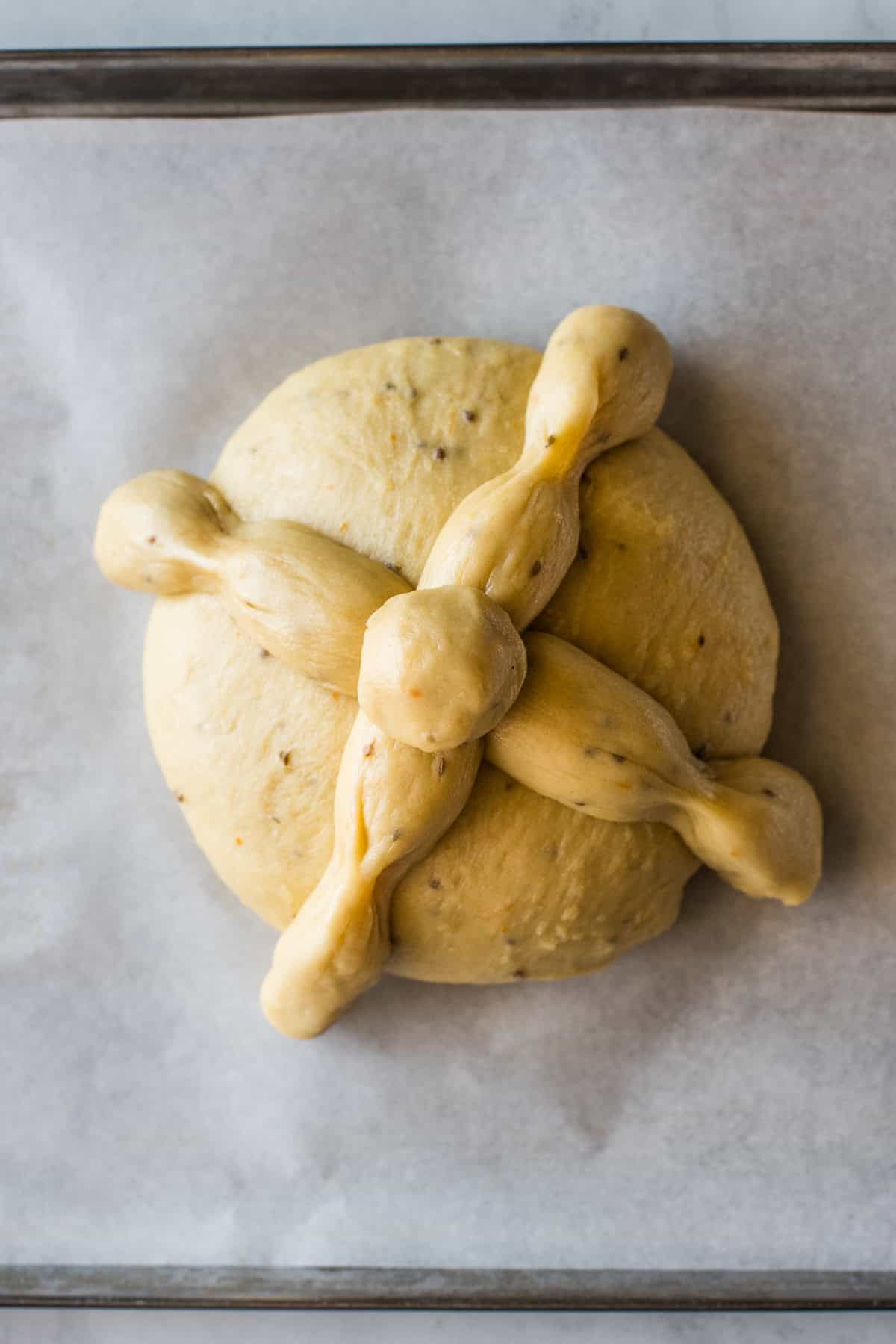
Bake at 350°F for 35-40 minutes, or until golden brown. Let cool slightly before topping.

Brush with butter and sugar. Brush the warm loaves with melted butter, sprinkle generously with sugar, and enjoy!
Recipe Tips
- Don’t rush the rise. This dough takes its time, and that’s what gives it that soft, pillowy texture. If your kitchen is on the cooler side, place the covered dough in your oven with the light on to help it rise.
- Use fresh orange zest and anise. These two ingredients give the bread its signature flavor. If you’re not an anise fan or don’t have any, you can use a smaller amount or replace it with a hint of ground cinnamon for warmth.
- Add the sugar topping while it’s warm. Brushing the bread with melted butter and rolling it in sugar while it’s still slightly warm helps the topping stick beautifully.
- Make it your own. Some people like to add a splash of orange blossom water or a dusting of cinnamon sugar instead of plain sugar for a twist. Some traditions even use ashes from roasted corn husks (totomoxtle).
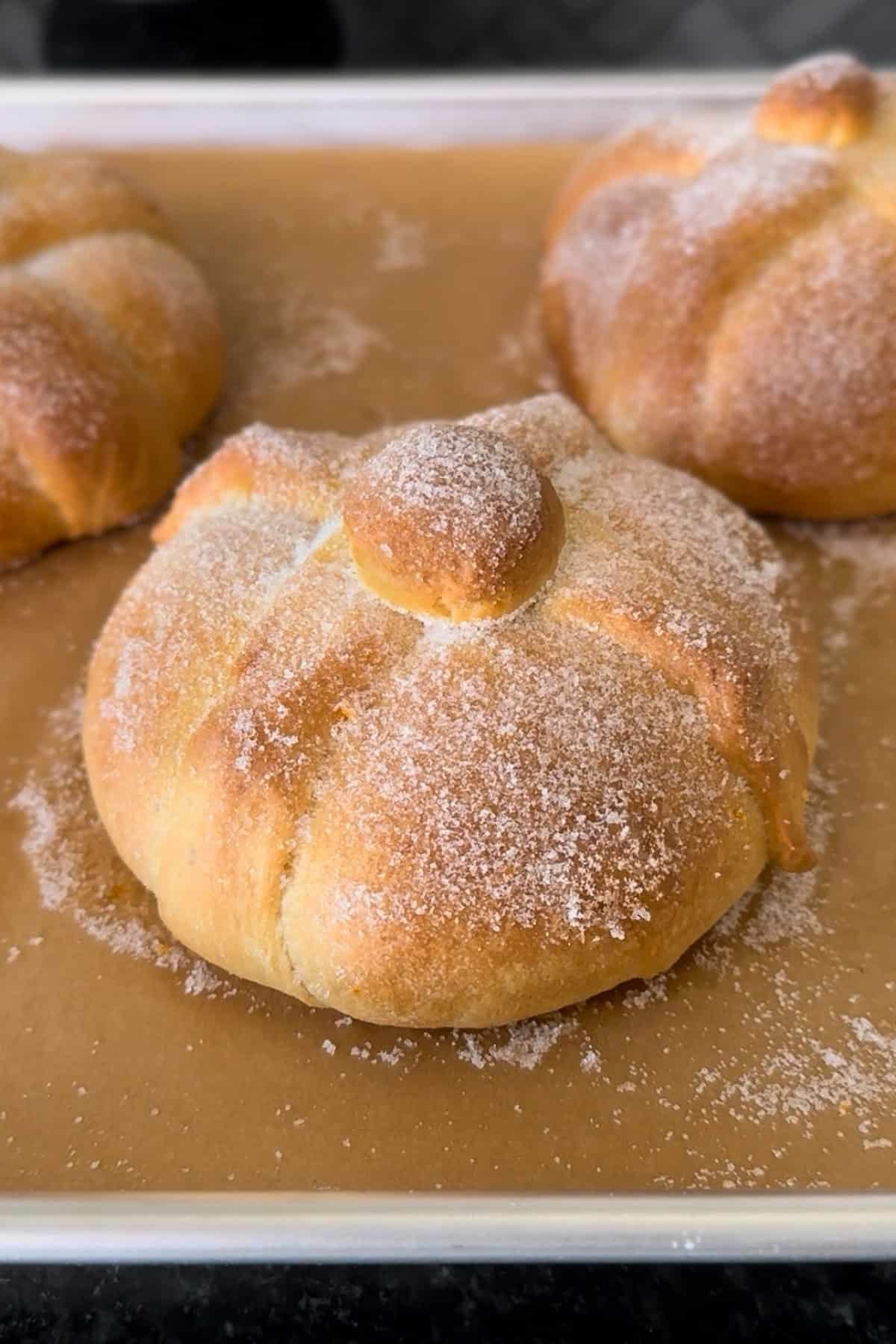
How to Serve Pan de Muerto
Pan de Muerto is delicious all on its own, but it’s even better when enjoyed the way it’s meant to be, with something warm to sip on and share with family. I love serving it with a mug of café de olla or Mexican hot chocolate for the full experience. It’s also great with a glass of classic Mexican atole, atole de nuez, atole de elote, or even just a little milk.
Because it’s lightly sweet and scented with orange and anise, it makes the perfect breakfast or merienda (afternoon snack). I like to toast a slice the next day and spread a little butter on top. Seriously heavenly.
And if you’re preparing it as part of your Día de los Muertos celebration, set one loaf on your ofrenda as an offering, and keep another for sharing with friends and family.
More Traditional Mexican Recipes

Pan de Muerto
Ingredients
- ⅔ cup whole milk
- 2 ¼ teaspoons active dry yeast
- ½ cup granulated sugar
- 2 ½ cups bread flour
- 2 ½ cups all-purpose flour
- 1 teaspoon fine salt
- 1 teaspoon anise seed
- 1 cup unsalted butter, melted
- 4 large eggs
- 2 teaspoons orange zest (about 2 medium oranges)
- 1 teaspoon oil
For the topping
- ¼ cup unsalted butter, melted
- 1 teaspoon orange zest (about 1 orange)
- ½ cup granulated sugar
Instructions
- In a cup or bowl, heat the milk in the microwave in 15-second increments or on the stove until it's just warm to the touch. A thermometer should read around 110°F-115°F.
- Stir in the yeast and sugar to combine, then loosely cover with plastic wrap and let it stand for 5 minutes until it gets very foamy.
- In the bowl of a stand mixer, whisk together the bread flour, all-purpose flour, salt, and anise seed.
- Attach the dough hook to the mixer and add the melted butter, eggs, orange zest, and yeast mixture. Mix on medium-low speed for 6-8 minutes, until the dough becomes smooth and elastic and pulls away from the bowl.
- Coat a large bowl with oil and transfer the dough to the bowl, shaping it into a ball. Cover it with a kitchen towel and let it rise for 2 hours until doubled in size.
- Line two large baking sheets with parchment paper and set aside.
- Divide the dough into 6 equal pieces, then cut 1/4 off of each piece and set it aside to create the bone shapes that will drape across each loaf.
- Shape the 6 large dough pieces into balls and place each of them on the prepared baking sheets.
- Make the bone-shaped decorations for each loaf. Tear a small piece off of each of the 6 dough remaining dough pieces. Roll each into a small ball and set aside. Drape the two long bones over each of the loaves in a cross shape, the top with the two balls.
- Divide each of the remaining 6 dough pieces in half to create 12 equal-sized pieces. Roll each piece into a long rope about 7-inches in length. Pinch the ropes at intervals to make them look like bones.
- Drape 2 of the long rope pieces over each of the loaves in a criss-cross shape, then top each with one of the small balls.
- Lightly cover with a kitchen towel and let it rise for 1 ½ more hours.
- 15 minutes before the resting time is over, preheat the oven to 350°F. Bake for 35-40 minutes, until the tops are golden brown and the bread is fully cooked through. Allow to cool for at least 30 minutes.
- Make the topping by whisking together the melted butter and orange zest in a small bowl or cup. Brush the melted butter mixture all over the top of the loaves, then roll or brush in the granulated sugar.
Video
Notes
Nutrition
Nutrition information is automatically calculated, so should only be used as an approximation.
This post was originally published in October 2022 and has been updated with new photos and more helpful recipe tips.

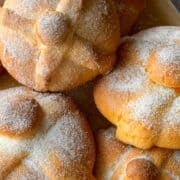
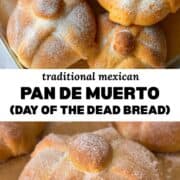

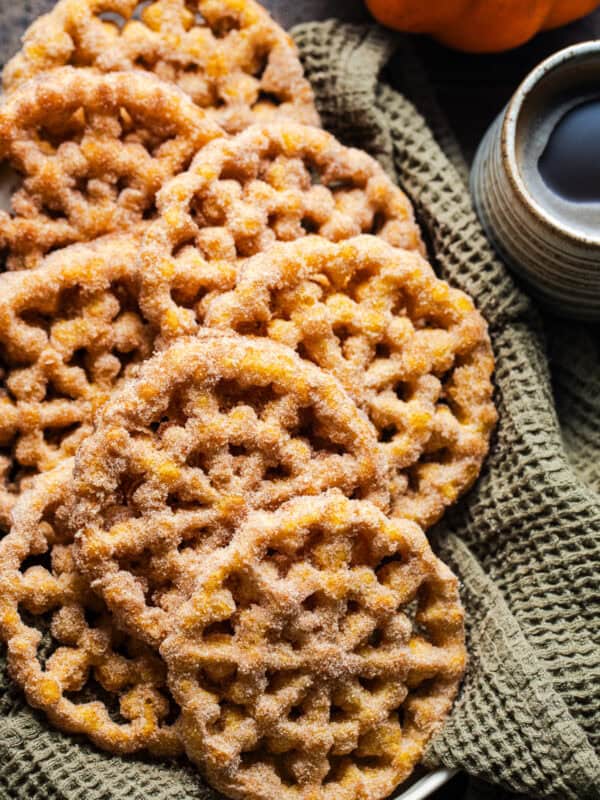

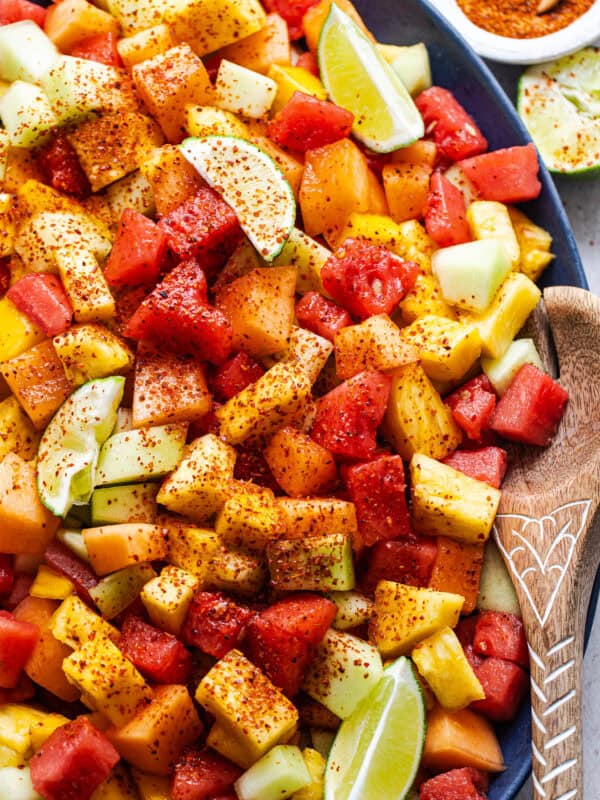









Bought the wrong kind of anise (star anise) oops. So I made it without it and the flavor was still amazing! I did add a 1/4 tsp vanilla extract to the dough to add some warmth since I didn’t have the anise seed on hand. Made it with my almost 4-year old and we had so much fun and I got to teach him about our traditions.
These are amazing. The only issue I had a was because of my own error. I read the recipe wrong and made 12 small loaves instead of 6. I read “divide 6 balls in half” completely wrong. I am so glad I checked the oven half way around 16min to rotate my pans when I realized the were a deep golden color so I took them out. Some of the bones were a little crispy but still good! The bread is nice and soft. The smell is so beautiful. Ps I don’t know why the page never lets me rate 5 stars. It just allows me to select 4. This happened with the pumpkin conchas too!
ADELANTE!! Espero Los piers see!! Thank you for every delicious recipe that reminds me of ALL my Ancestors, the strong women I wish I were more like!! You & that beautiful princessa will make beautiful memories! Que Dios Los bendiga siempre
I love your recipes I wish you had a book I could purchase.
Just finished making these for Diá de Los Muertos and they are so good! 5 stars!